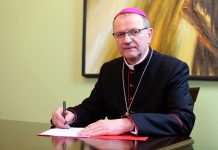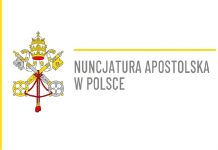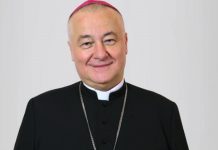14 November 2022 the Permanent Council of the Polish Bishops’ Conference adopted the Position towards the actions of John Paul II regarding sexual crimes against minors.
We publish the whole text of the Position:
POSITION
OF THE PERMANENT COUNCIL OF THE POLISH BISHOPS’ CONFERENCE
TOWARDS THE ACTIONS OF JOHN PAUL II
REGARDING SEXUAL CRIMES AGAINST MINORS
In the public space, we are increasingly hearing questions about John Paul II’s attitude towards the tragedy of sexual abuse of minors and vulnerable people by the clergy and about his response to such crimes during his pontificate. It has been increasingly alleged that the Pope did not deal adequately with such acts and did little to address the problem, or even covered it up. Formulating opinions of this kind seems to be a kind of fad. This is aligned with the attempts to undermine the authority of John Paul II and even to question his sanctity, confirmed by the beatification and canonization process. Consequently, it constitutes an attempt to diminish the significance of this unique pontificate for the Church, the world, culture, and the human person.
The root cause of the communications media assault on St. John Paul II and his pontificate is the attitude of media towards his teaching expressed, for example, in encyclicals such as Redemptor hominis or Veritatis splendor, as well as in his theology of the body, which does not correspond to contemporary ideologies promoting hedonism, relativism and moral nihilism.
In this situation, an honest search for the truth and bearing witness to it is the duty of every right conscience. A review of John Paul II’s actions should take into account the historical context, the state of knowledge at the time and the conditions in which he lived. These were marked above all by the aftermath of the cultural revolution of 1968, which rejected objective criteria of morality and personal responsibility. It was widely held, especially in Western university circles, that everything had the same value and that, consequently, there was no difference between good and evil, truth and falsehood, beauty and ugliness. Today, new ideologies are emerging that are the legacy of the 1968 revolution. They undermine Christian anthropology, the fundamental truth of which is that God created human beings, as male and female, in His image and likeness. Clearly, the struggle against the Christian vision of man is coupled with attempts to undermine the great authority enjoyed throughout the world by John Paul II, who preached this vision with great force in every single contemporary Areopagus.
In an effort to understand John Paul II’s approach to the problem of sexual abuse of minors, we would like to show the consistent actions he took.
- Already at the beginning of his pontificate, the new Code of Canon Law introduced by John Paul II in 1983, unequivocally obliged Church superiors to sanction with just punishment members of the clergy who were perpetrators of sexual abuse of minors, not excluding their expulsion from the clerical state.
In 1992, Pope John Paul II promulgated The Catechism of the Catholic Church, which in its article 2389 states as follows: “any sexual abuse perpetrated by adults on children or adolescents entrusted to their care” is a sin. “The offense is compounded by the scandalous harm done to the physical and moral integrity of the young, who will remain scarred by it all their lives; and the violation of responsibility for their upbringing.”
- Probably the first serious signal of sexual crimes committed by clergy against minors reached John Paul II from the Church in the United States in 1985 through the Apostolic Nuncio in Washington, D.C. It was an analysis of the ineffectiveness of the action taken by the Church in the US against the perpetrators of the aforementioned crimes. However, the actual scale of this phenomenon was not fully understood at the time.
- During the ad limina visit of the US Episcopate in 1993, John Paul II noted that the bishops were not unanimous in their application of the criminal law to sexual crimes committed by clergy. The prevailing tendency was to minimize the importance of the criminal law in the life of the ecclesial community, and the legal tools in place were frequently disregarded. There was also no recognition of the depth and damage to the mental health of the victims of these crimes. This was because, at that time, movements calling for the legalization of pedophilia were growing in strength worldwide.
After this visit, John Paul II wrote in a letter to US bishops as follows: “The canonical penalties which are provided for certain offenses and which give a social expression of disapproval for the evil are fully justified. These help to maintain a clear distinction between good and evil, and contribute to moral behavior as well as to creating a proper awareness of the gravity of the evil involved.”
In the second part of this letter John Paul II warned against the treatment of moral evil as an opportunity for sensation: “Evil can indeed be sensational, but the sensationalism surrounding it is always dangerous for morality.” It is possible that this way of thinking of the Pope was a consequence of his painful experience in Poland, where during the communist regime the mass media were, as it were, officially hostile towards the Church and often the information appearing in media was nothing but lies and slander. The position of distrust and disbelief towards the allegations concerning the clergy was therefore largely justified, especially as under the communist system such allegations were often a means of discrediting the position and activities of the Church and an opportunity to recruit collaborators from among the clergy.
- It seems that during the period between the mid-1980s and the mid-1990s, John Paul II primarily saw the sexual abuse scandal as a problem for the Church in the United States and in Anglo-Saxon countries. Therefore, in 1994, he issued an indult for the Church in the USA with the aim of ensuring greater protection for children and adolescents via bringing Church regulations into line with US law. This document raised the age of protection for minors from 16 to 18 and extended the statute of limitations for offences of sexual abuse of minors to 10 years from the time the victim reached the age of 18. Two years later, in 1996, the Pope issued a similar indult for the Church in Ireland, from where information about sexual crimes committed by clergy had also begun to emerge.
Evidently, the Pope’s awareness of the magnitude and impact of these crimes grew over the years. It became increasingly clear to him that bishops and senior religious superiors were failing to take adequate and lawful measures and that they were failing to cope with their application.
- This is why, despite post-conciliar decentralization tendencies, in 2001 John Paul II issued the document Sacramentorum sanctitatis tutela for the entire Church. In it, the child was portrayed as one of the greatest treasures to be protected at all costs. Sexual abuse of a child was recognized as one of the most serious ecclesiastical offences and was equated with desecration of the Blessed Sacrament or violation of the secrecy of confession. In order to avoid trivializing these offences within the local Churches, the Pope, by virtue of this document, established the jurisdiction of the Holy See over all cases of sexual abuse of minors from the moment the offence became likely and ordered it to be reported to the Congregation for the Doctrine of the Faith. Henceforth, criminal proceedings conducted in these cases were reserved to the Holy See and have remained under its strict control to this day. This decision showed that John Paul II recognized the scale and global nature of the crisis caused by the sexual exploitation of children and adolescents. This change in the application and enforcement of the law was truly unprecedented. With the benefit of hindsight, we can see that it proved to be a turning point in the Church’s fight against sexual crimes within its own ranks. Following these decisions by John Paul II, the Holy See obliged all Bishops’ Conferences to introduce specific norms for dealing with such cases, at the same time respecting secular law.
- The Pope’s growing awareness was demonstrated in his address to the US cardinals in April 2002. The speech was delivered during a meeting that was a direct result of the wave of revelations of crimes against children and minors committed by clergy, provoked by a series of articles in The Boston Globe daily. Diagnosing the crisis, John Paul II pointed to the pain of the victims of the crimes. He assured the victims of abuse and their families of his “profound sense of solidarity and concern.” In doing so, he pointed out that confronting these painful consequences must transform the Church and make it more holy. Furthermore, the Pope stressed that whoever abuses minors negates this holiness and that „there is no place in the priesthood and religious life for those who would harm the young.” He also saw as an important part of the problem the fact that „many feel hurt by the way the hierarchy approaches these crimes” and by their „decisions which have proved to be wrong in their consequences.” The Pope’s diagnosis of the crisis is therefore unequivocal and the course of action to remedy the situation is unambiguous.
- The above actions taken by John Paul II in the face of an increasingly evident crisis offer a picture of a Shepherd who wished to confront this crisis courageously and resolutely, being aware at the same time that this crisis could threaten the Church’s ability to properly carry out her mission in the world. The Pope concluded that only „a Church confronting the problem of abuse with clarity and determination” could also help society to counter the scourge of sexual crimes against minors and the vulnerable. Seeing that, in the face of this problem, topical answers are not a sufficient solution, in 2001 the Pope took a decisive step and changed the law, which became a tool for the whole Church. With this change, he set in motion a process of purifying the Church, continued by his successors, Popes Benedict XVI and Francis.
When trying to understand the situation today, it is also necessary to take into account the mentality of secrecy that also prevailed in the Church at the time. Thus, even if some action was taken, at the same time there was fear and resistance to communicating it transparently.
Moreover, the Holy See’s report on former Cardinal Theodore McCarrick raises questions about the extent to which John Paul II was reliably informed by the bodies designated for that purpose and the extent to which certain decisions were taken without his knowledge at other levels of authority, in line with one’s remit. In any case, the McCarrick report does not show any “cover-up” or “sweeping under the rug” by John Paul II of sexual crimes committed by clergy.
Trying to understand the approach and measures of Saint John Paul II can be an opportunity for us to realize that God’s action comes through ordinary humanity, conditioned by historical context and personal history. It is also a way for us to gain a deeper insight into holiness, which consists in the heroic living of faith, hope and love. The Pope showed great sensitivity to every human being, as evidenced by his life and teaching. The Church’s proclamation of a person’s holiness is not an affirmation of their sinlessness, let alone infallibility, but a recognition of the witness of their bond with Christ, despite human limitations and condition.
It is an indisputable fact that John Paul II was the Pope who, as he acquired knowledge, adopted decisive measures against cases of sexual abuse of children and minors by certain clergy and introduced Church-wide norms of accountability for such crimes, stressing that “there is no place in the priesthood and religious life for those who would harm the young.” John Paul II began a very important process of purification of the Church in this respect and this process has continued to this day.
Jasna Góra, 14 November 2022

 English
English







